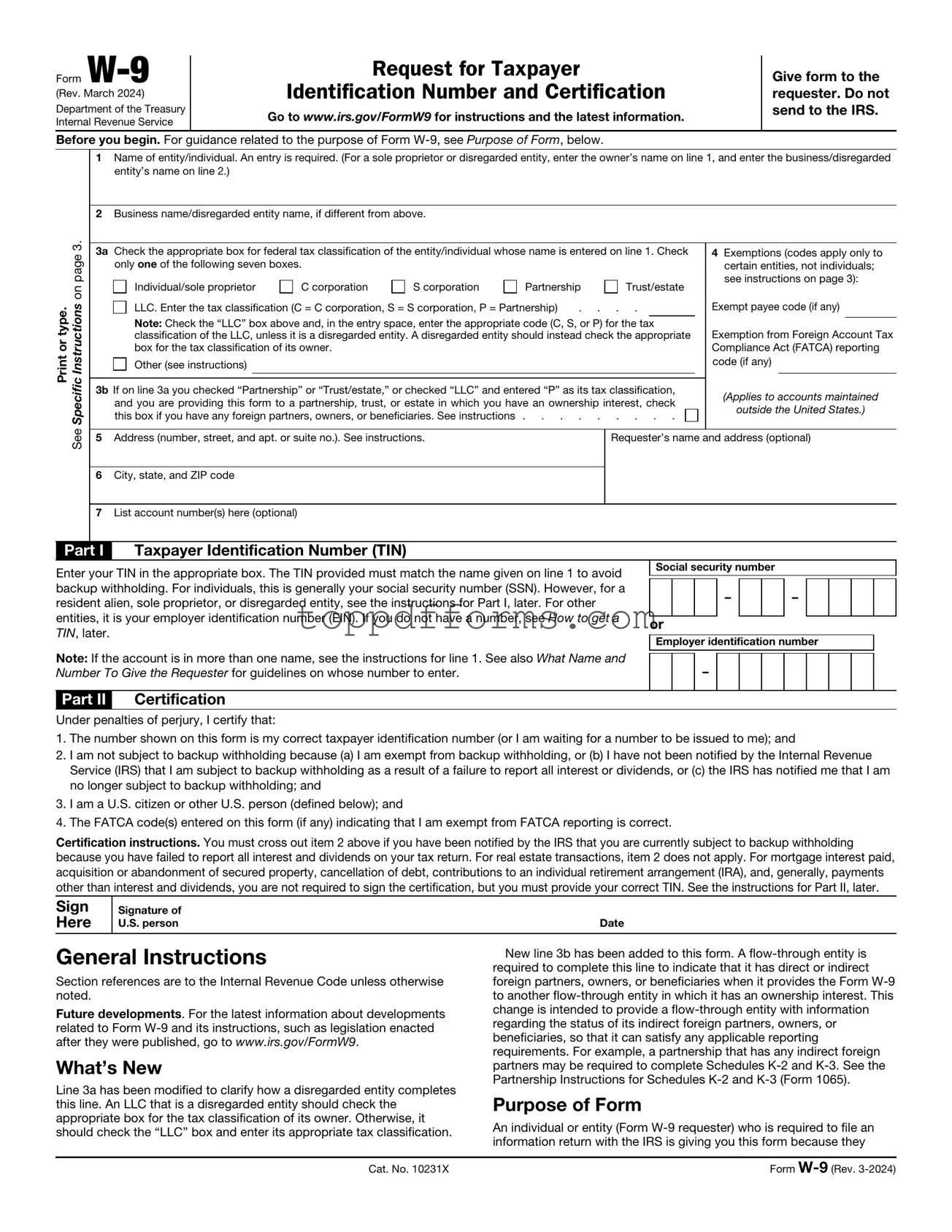What is the purpose of the IRS W-9 form?
The IRS W-9 form is used to provide your taxpayer identification information to another party. This form is typically requested by businesses or individuals who are required to report payments made to you to the IRS. By filling out the W-9, you certify that the information you provide is accurate and that you are not subject to backup withholding.
Who needs to fill out a W-9 form?
Individuals and entities that receive income that must be reported to the IRS need to fill out a W-9 form. This includes freelancers, independent contractors, and vendors. If you receive payments from a business that exceeds a certain threshold, they may request that you complete a W-9 to ensure proper tax reporting.
How do I fill out a W-9 form?
To fill out a W-9 form, you will need to provide your name, business name (if applicable), address, and taxpayer identification number (TIN). For individuals, this is typically your Social Security number. For businesses, it may be an Employer Identification Number (EIN). Ensure all information is accurate and complete before submitting the form.
Where do I send the completed W-9 form?
The completed W-9 form should be sent directly to the requester, not to the IRS. The requester is usually the business or individual who asked for the form. They will use the information provided on the W-9 to prepare the necessary tax documents, such as a 1099 form, to report payments made to you.
Is the W-9 form secure?
While the W-9 form requires sensitive information, such as your Social Security number or EIN, it is important to ensure you send it to a legitimate requester. Verify their identity and the purpose of the request. Avoid sending the form via unsecured methods, such as email, unless you are confident in the security of the transmission.
What should I do if my information changes?
If your information changes, such as your name or address, you should complete a new W-9 form and submit it to the requester. It is crucial to keep your information up to date to avoid issues with tax reporting and to ensure you receive the correct tax documents at the end of the year.
